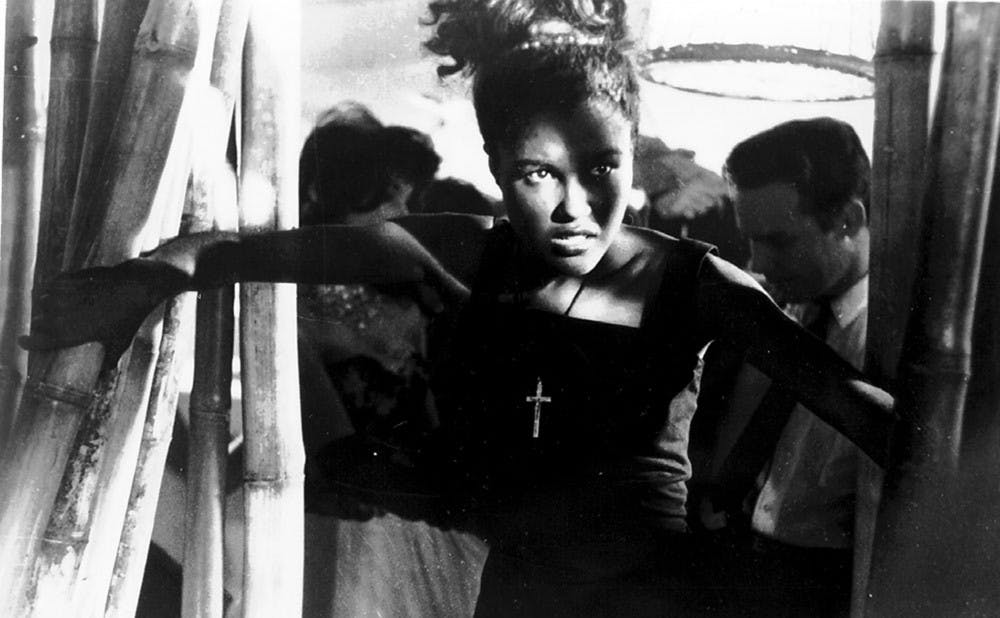Black and white images of bikini-clad women lounging on a cruise ship are juxtaposed with unsteady footage of Molotov cocktails arcing through the air at a drive-in movie. Glamorous shots of extravagant nightclubs follow scenes of uniformed men slamming the butts of their guns into doors, forcing their way into a home. The screen goes dark and bold letters declare “Soy Cuba.”
This is how the Arts of the Moving Image department will kick off its showcase of Cuban cinema, when Screen/Society shows 1964 film “Soy Cuba” Sept. 16 at Bryan Center’s Griffith Film Theater.
“‘Soy Cuba’ is a very peculiar film because, [it was] a tremendously ambitious production, it was a Soviet-Cuban collaboration,” said Gustavo Furtado, assistant professor of Portuguese and Romance Studies and curator of the Cuban Cinema series. “The film was tremendously complex and yet when it came out, it was a bit of a flop.”
The film documents the experiences of four different Cuban natives suffering during the 1959 Cuban revolution to overthrow dictator Fulgencio Batista.
Out of an interest in promoting international socialism, the Soviet government agreed to fund a film about the Cuban revolution in partnership with Cuba’s Fidel Castro government. Filmed in Cuba under Russian director Mikhail Kalatozov and Russian cinematographer Sergey Urusevsky, “Soy Cuba” took a year to produce, but was not well received in Cuba or the Soviet Union.
Thirty years later, in the early 1990s, filmmakers Martin Scorsese and Francis Coppola revived the film at a festival and began the campaign to restore it.
“Very well-respected American filmmakers and film scholars rediscovered the film and felt that it was one of the most remarkable, impressive, important films ever made, and yet it had not had its impact at the moment when it came out,” Furtado said. “That led to a whole reconsideration of the value of this film.”
The significance of the film can be partly attributed to the cinematography that makes the film a “visual tour de force,” Furtado said.
“Soy Cuba” employs techniques including using infrared film stock, originally developed by the Soviets for military purposes, to exaggerate contrasts and complex long takes.
One of those long takes in the film includes a vertical movement concluding with the camera being submerged in water, the lens coated in a submarine periscope cleaner to make it impervious to water.
“It’s still a fantastically beautiful film, but it is also terribly dated,” Furtado said. “It’s a strange object that had a most utopian-like ambition for what a cinema of revolution could be. It was aesthetically breathtaking and astonishing, and yet it is only appreciated nostalgically.”
Furtado described the film as one that allows viewers to think about politics, history and time; about politics and aesthetics; and even about politics and nostalgia. Despite recent developments in United States-Cuba relations with the opening of the U.S. embassy in Cuba, the question the film raises is in the ambition of redeeming such a film only at the moment when its particular politics “no longer have any teeth, no longer have any claim to the present,” Furtado said.
Screen/Society’s three-film series—the others being “Lucy” and “Memories of Underdevelopment”—ties into Furtado’s “Cine Politico” course, a Spanish course that studies major works of Latin American cinema from the 1960s onwards in the context of the political affairs of the films’ time periods.
Furtado emphasized “avant garde” cinema in which filmmakers focused on using the form and aesthetic of art as a crucial instrument in conveying political struggles.
“’Soy Cuba’ is one of several emblematic examples examined in the course in an intersection of modernism with radical politics, which makes post-revolution Cuba a time period of interest,” Furtado said.
“Soy Cuba” fits in that it is the product of cinema and social experimentation to explore local politics on a global dimension.
For Furtado, one purpose of the course and its accompanying films is to introduce students to the idea that art and culture are intrinsically tied with making the world a vastly different place.
“I think people today are much less likely to dream about radical transformation, or to think that images can have something to do with radical transformation, than they were in 1968,” Furtado said. “A large section of the course is that context—that images matter, that the future is up for grabs, that what’s given is not given forever, that it can be radically questioned.”
In the same way Furtado sees the film as an example of a tool for politics, his students like freshman Chloe Hooks also see the context of seeing the purpose of film and other artwork from a different perspective.
“In a Spanish class, I’ve never been reading political manifestos before and I’ve definitely never been reading political manifestos that also relate to art,” Hooks said. “This is a way to make art a more realistic, practical application that is supposed to help people in the world.”
While Furtado hopes the film will expose the experiences of a post-Cold War history that students are often unaware of even though it is also their own history, he also wants students to explore the concept of utopian thinking and art being a force for change.
“My ultimate fantasy is always that these films will leave some lasting impression and provoke some kind of thought,” Furtado said. “That’s really what I expect with any work of art—the world looks a little bit different after you engage with it.”
Get The Chronicle straight to your inbox
Signup for our weekly newsletter. Cancel at any time.

